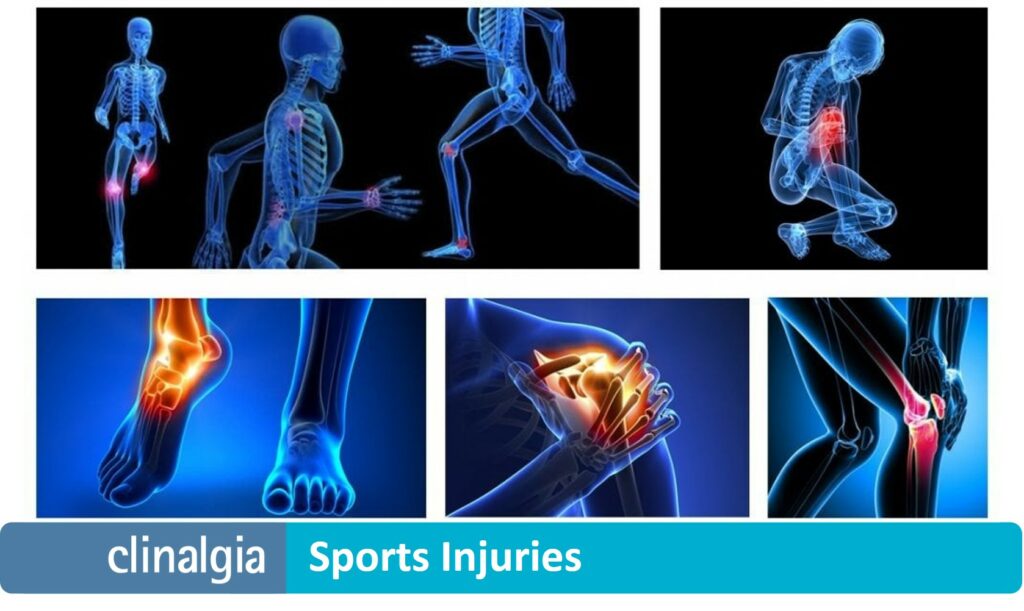
Sports Injuries: what they are, causes and type

Sports injuries can be prevented, minimised and treated with a sports optimisation plan based on different elements (nutrition, supplementation, muscle chains, antioxidant systems, etc.).
What are sports injuries
Sports injuries resulting from muscle strains produce shortening and tractions that cause pain, mechanical tension and stress on structures such as muscles, tendons, ligaments and joints.
Following the review by Moreno et al, «Epidemiological research seems to indicate that sports injuries occur mainly in young populations, possibly not only because of the higher frequency of practice at this age, but also because of the type of sports practised».
«The female sex is more vulnerable than the male sex, in particular to capsulo-ligamentous injuries which, on the other hand, are the most frequent in both sexes, together with muscular injuries.»[1][2
Athletes, whether they are professionals or not, work their bodies hard, subjecting them to particularly stressful situations, not only from a mechanical point of view, but also from an emotional point of view.
You don’t have to be a professional to be a top athlete.
What are the causes of sports injuries?
The most common causes of sports injuries are:
– Lack of training or fitness
– Overtraining
– Inadequate training programmes
– Incorrect rhythms or inadequate warm-up practice
– Muscle fatigue
– Inadequate rest or lack of Rest
– Inadequate equipment
– Not listening to what the body is telling us
– Weather conditions (cold, humidity) and environmental conditions (e.g. unsuitable pitch)
– Incorrect nutrition
– Etc.
Most of these causes (there are more) are preventable.
Amateur and professional athletes should know how to mitigate them by ensuring that these risks are minimised or perceived in advance.
Types of sports injuries
Sports injuries can be classified into two main groups: acute injuries, which can be considered accidents, and chronic injuries, which are the ones we deal with at Clinalgia.
Chronic injuries are usually caused by biochemical and mechanical stress, by microtraumatisms secondary to repetitive and/or abusive use of certain muscle groups.
The most common sports injuries are usually:
1.- Sprains
2.- Meniscus tears
3.- Muscle injuries
4.- Tendinitis
-
-
-
- Tendinosis
- Jumper’s knee
- Swimmer’s shoulder
- Wrist tendinopathies
- Iliotibial band
- Goose foot
- Achilles tendon
-
-
5.- Periostitis and stress fractures
-
-
-
- Osteopathy of the pubis
- Stress fracture
-
-
6.- Plantar fasciitis
7.- Low back pain
8.- Ulnar neuropathy or Handlebar paralysis
9.- Cyclist’s perineal paralysis syndrome
10.- Cyclist’s knee
11.- Hot foot syndrome
12.- Overtraining (Athletics)
13.- Concussions (rugby, boxing)
Prevention
The first objectives for the prevention of musculoskeletal injuries lie in neuromuscular training techniques, with adaptation and modification of habits and recommendations in the use of accessory equipment.
Proper neuromuscular re-education, working on balance, strength and agility in a balanced way, can reduce the incidence of injury by up to 35%.
What other factors can help prevent sports injuries?
-
-
- Physical factors (sports physical rehabilitation)
- Psychological factors (sports psychology)
-
Treatment
From our point of view as experts in pain management, a person who improves their pain with multidisciplinary treatment, properly planned as a team, needs maintenance based on a sports optimisation plan.
It is necessary to remember that healthy and well-directed physical exercise is the best way to avoid relapses after having overcome an episode of chronic pain.
From our vocation in the treatment of refractory chronic pain, from our protocols of treating chronic pain in a sequential way, recovering musculoskeletal tensions, came the development of our own protocols for our patients to improve their physical condition as part of maintenance.
These same protocols have been shown to be effective in sports treatment, improving and optimising the capabilities of elite athletes, professional or otherwise.
In conjunction with the sports medicine specialist, we can design biomechanical and biochemical optimisation plans to improve performance and alleviate the wear and tear that any sporting activity may entail.
Nutrition, supplementation, recovery of muscle chains and fascial tensions, improvement of the antioxidant system and personalised training plans allow our athletes, whatever their level, to minimise their injuries and get the most out of their physical condition.
As a complement to the sports medicine specialist, who is always our reference, our own protocols are specific to each of the most frequent injuries in the field of sport.
Sports rehabilitation
Sports rehabilitation, consisting of optimisation to improve performance and avoid injury, can be carried out by treating physical and psychological variables:
-
-
- Physical factors
- Psychological factors
-
Among the most frequent types of sports rehabilitation are:
-
-
- Sports physiotherapy
- Electrotherapy
- Lymphatic drainage
- Cryotherapy
- Sports supplementation
-
References:
[1] Moreno-Pascual IC, Rodríguez-Pérez V, Seco-Calvo J. Epidemiology of sports injuries. 2008, 30: 40-48.